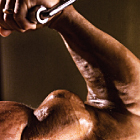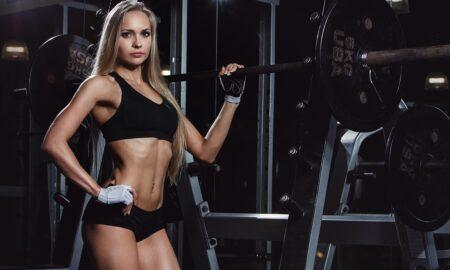 Q: What do you think is the most important aspect of a workout to keep in mind? What do most people do wrong that would make a huge difference in their results if they corrected it?
Q: What do you think is the most important aspect of a workout to keep in mind? What do most people do wrong that would make a huge difference in their results if they corrected it?
A: Most lifters fail to consider the concept of time under tension, or TUT. I have observed hundreds of people working out over my 20-plus years in the gym, and in most cases the average set lasts about 20 to 25 seconds. The problem is, in order to trigger maximum mass, sets should keep a muscle under tension for about 40 seconds and in some cases 60 to 70 seconds or more.
Just because you complete a set of eight to 12 repetitions does not mean the anabolic processes that lead to hypertrophy have been optimally stimulated. That’s the reason you see coaches like myself, Charles Poliquin and others adding “rep tempo” to our workout protocols—to make sure that each set has a reasonable TUT.
In fact, in some ways the rep tempo is more important than the actual rep count. If you perform each rep at a tempo of 4/1/2—four-second negative, one-second pause at midpoint, two-second positive—you only need six repetitions to keep the muscle under tension for more than 40 seconds (7 seconds x 6 reps = 42 seconds).
On the other hand, if you perform 10 reps at a tempo of 1/0/1, which is pretty common for many lifters), the muscle will remain under tension for only 20 seconds or so. From a physiological standpoint I can tell you that in the examples above, the set of six reps is far more effective for igniting muscle growth than the set of 10.
My point: Most people in the gym lift and lower their weights too quickly and so don’t keep the target muscle under tension long enough to stimulate growth optimally. If they would just slow things down, that one adjustment alone would make a great difference in their muscle-building results.
Q: When it comes to pectoral development, you’re the man. I know you use P/RR/S and FD/FS training nowadays, but I am curious about what you did for chest in your first few years of training. What built the foundation for those crazy pecs?
A: Thank you for the compliment. I have to say that very early in my training I adopted very good form, always used a full range of motion, and taught myself to position my torso properly so my pecs would do the majority of the work on presses and flyes (rather than rear delts and triceps). I believe that’s what is most responsible for my great level of chest development. As to the program I used, I generally had two that I switched off from week to week:
Week 1
Bench presses 3 x 5-7
Smith-machine
incline presses 3 x 5-7
Weighted dips 3 x 5-7
30 degree incline flyes 2 x 8-10
Week 2
Flat-bench dumbbell presses 3 x 5-7
Incline presses 3 x 5-7
Hammer Strength
incline presses 3 x 5-7
Dumbbell pullovers 2 x 8-10
I rarely did cable crossovers or pec deck flyes or used any machines aside from the Hammer Strength and Smith. I always tried to increase my strength within the above rep ranges and worked up to bench-pressing 405 x 5, incline pressing 365 x 6, dumbbell pressing 160s x 5, performing flyes with 110-pounders and dipping with more than 100 pounds added to a weight belt! Hard, heavy and consistent work on the basics—that’s how it’s done.
—Eric Broser
Editor’s note: Eric Broser’s new DVD “Power/Rep Range/Shock Max-Mass Training System” is available at Home-Gym.com. His e-books, Power/Rep Range/Shock Workout and The FD/FS Mass-Shock Workout, which include complete printable workout templates and Q&A sections, are available at X-Workouts.com.




















You must be logged in to post a comment Login